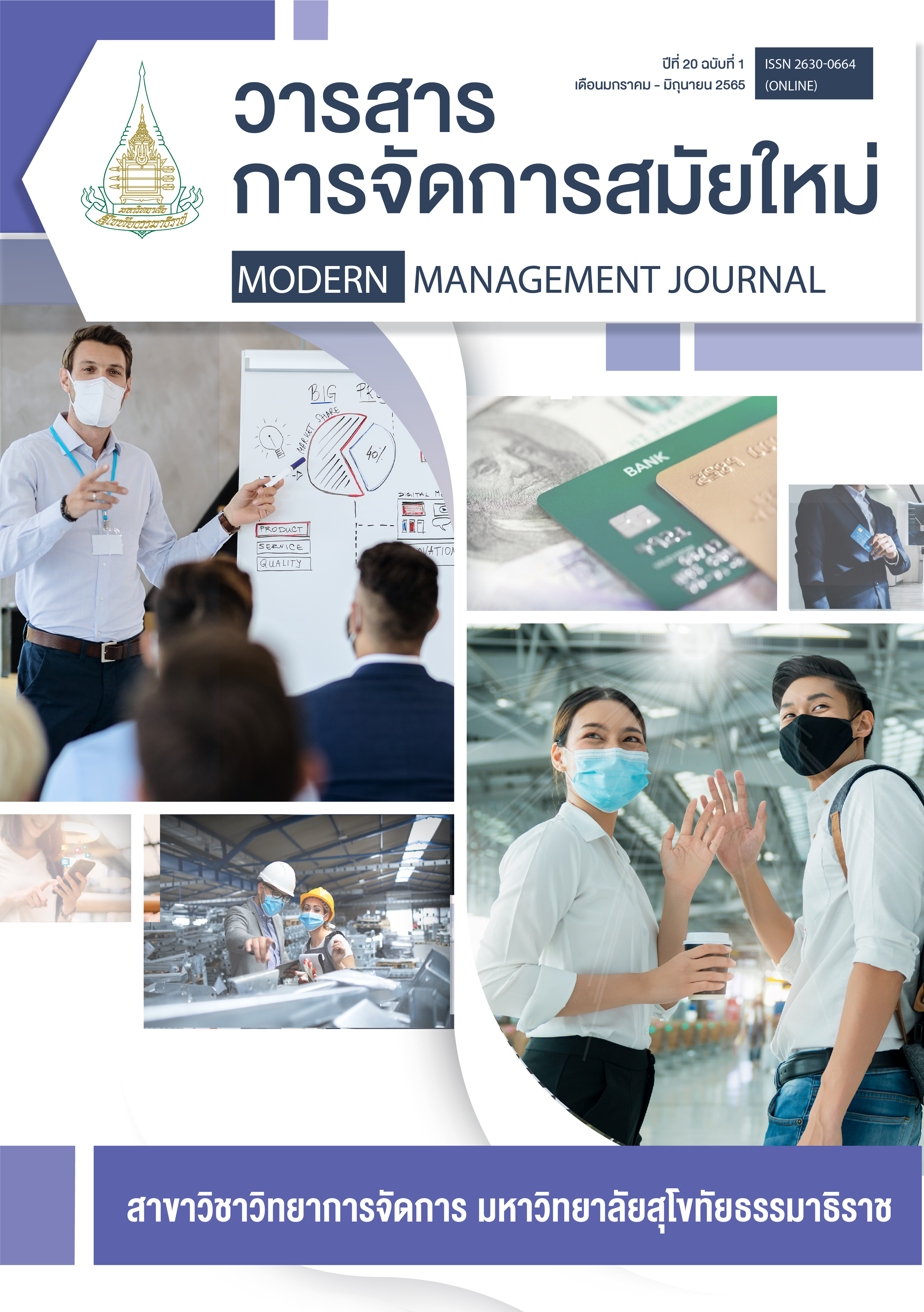The Study guideline for Developing Mocktail dinks Herbal ingredients for promoting the Cultural tourism in Dhouburi District, Bangkok
Keywords:
Mocktail dinks Herbal, Cultural TouristAbstract
The objective of this research is 1) to develop a prototype mocktail recipe of Thai herbs for cultural tourism promotion in Thonburi district, Bangkok, and 2) to study guidelines for the development of herbal cocktail recipes for cultural tourism promotion in Thonburi district, Bangkok. This is a quantitative and qualitative research. The results showed Reasons for choosing herbal cocktails were their good effects on health and good taste. Most of them like the recipe “Dhonburi Honey Basil”. Using advanced statistical social science program for checking structural validity by confirmatory component analysis that is consistent with the empirical data (Chi-square = 4.58, df =4, P-value = 0.833, and RMSEA = 0.019). The results were analyzed by using orthogonal rotation from 6 variables with the Kaiser-Myers-Olkin of 0.727 and the Chi-Square (X2) of 1256.350. Within a range of Eigen values between 0.753 to 0.877 and cumulative variance of 79.330 percent, 2 components were found which are 1) market management component to support tourist attractions that are environmentally friendly and 2) participation in raising awareness of the community. After having 44 community representatives most of the key informants (98.3%) favored all 7 drink recipes which named after the local identity. The recipes are sorted from high to small scores as follows: 1. Dhonburi Honey Basil 2. Passion Fruit Mojito 3. Watermelons Drip Fresh 4. Anchan Rueng Ra ThaPhon 5.Num King Sod Sai 6. KanlayaWan Jai and 7. Krachai Mai Ta.
References
Aru A*,Disalva X,MuraLin. (2018). A Study on Formulation and Acceptability of anti-cold Mocktails Vitamin C Enriched Ingredients., Vels Institute of Science Technology and Advanced Studies, Chennai, Tamil Nadu, India.
Chaudhary Moni and Mishra Sunita. (2017).Types of Cocktail and Mocktails, Sensory Evaluation, and Its Packaging. Asian Journal of Science and Technology Vol. 08, Issue, 12, pp.7104-7108, December.
Hoang, Minh Chau; Nguyen.(2019). Thi Kim Oanh. The potential of sushi and cocktail pairing : Case: Japanese Sushi Restaurant Itsdemo, Helsinki. Thesis; Tourism and Hospitality Management Faculty, Saimaa University of Applied Sciences.
Kanlaya Vanichbuncha. (2005). Statistics for Research, Bangkok: Chulalong University.
Kalchiya Boonyakiat. (2010). Study of behavior and the level importance of purchasing decision: Herbal drink products read to drink by consumers ib bangkok. Degree thesis master Industrial education school King Mogkut’s Unversity of Technology North Bangkok.
Kittisak Utawong. (2012). Marketing Planning for Tri Phala Herbal Drink for Health. Faculty of Pharmacy Mahasarakham University.
Nimesha Ranasinghe and Thi Ngoc Tram Nguyen. (2017). Vocktail: A Virtual Cocktail for Pairing Digital Taste, Smell, and Color Sensations. MM '17: Proceedings of the 25th ACM international conference on Multimedia Pages 1139–1147.
Oranuch Hongsachart and Supachai Phulaidok. (2006). The Development of water production formulas the koi water, Faculty of food technology, Kalasin campus, Rajamangala University of Technology Isan.
GfjPairote Wiriyacharee. (2010). Drink. Faculty of Agriculture, Chaing Mai University
Porrarath Suphamityotin. (2013). Technology of fruits and vegetables 1st edition, Rajabhat Mahasarakham University.
Raveewan Virotewan. (2018). Bar and Beverage Management.2nd edition,Bangkok: type: Nation high,1954 co.,ltd.
Shella D.Bawar. (2019). Development of mocktail drinks with butterfly pea flower extract. TESDA Women’s Center, Philippine Institute.
Downloads
Published
How to Cite
Issue
Section
License
Copyright (c) 2022 Modern Management Journal

This work is licensed under a Creative Commons Attribution-NonCommercial-NoDerivatives 4.0 International License.



